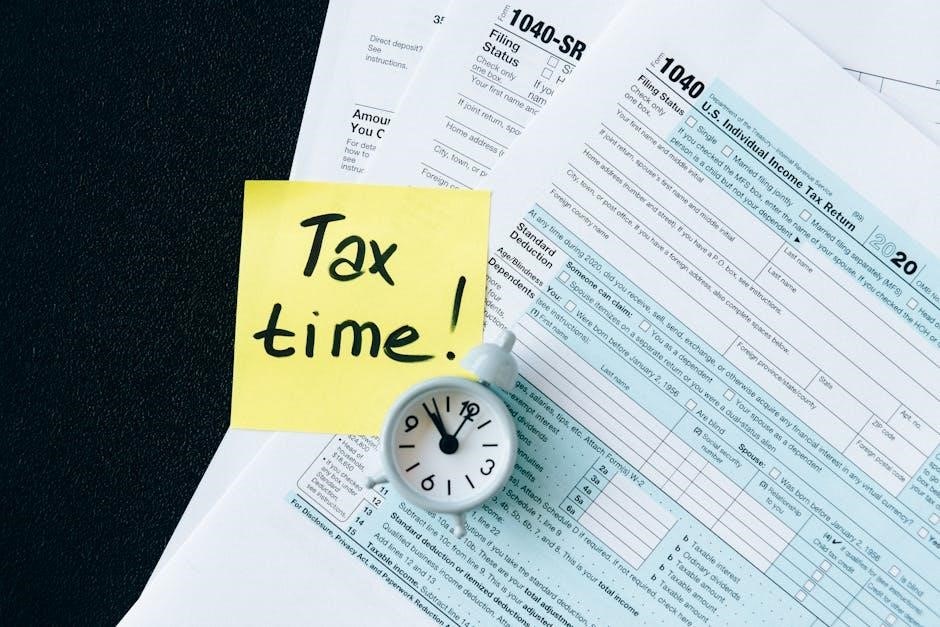Form 2890 Mid-Point Report: An Overview
Form 2890‚ also known as the SNAP and TANF Mid-Point Report‚ serves as a crucial document for individuals participating in these assistance programs. It facilitates the reporting of changes during the certification period‚ ensuring accurate benefit allocation based on current circumstances.
Purpose of Form 2890

The primary purpose of Form 2890‚ the SNAP and TANF Mid-Point Report‚ is to ensure the continued eligibility of recipients for Supplemental Nutrition Assistance Program (SNAP) and Temporary Assistance for Needy Families (TANF) benefits. This form allows the Illinois Department of Human Services to review a household’s circumstances midway through their certification period‚ typically around the sixth month‚ and verify that they still meet the income‚ household size‚ and other eligibility requirements.
By completing this report‚ recipients provide updated information about their income‚ employment‚ and household composition‚ which allows the department to adjust benefit levels accordingly. The form also helps to prevent overpayments or underpayments of benefits‚ ensuring that taxpayer dollars are used efficiently and effectively. Ultimately‚ Form 2890 promotes accountability and integrity within the SNAP and TANF programs‚ ensuring that assistance is provided to those who genuinely need it.

Who Needs to Complete Form 2890?
Form 2890‚ the SNAP and TANF Mid-Point Report‚ is specifically required for households in Illinois that are designated as “Mid-Point Reporting” households. These households are typically identified by the Illinois Department of Human Services (IDHS) during the application or redetermination process for SNAP and TANF benefits.
Generally‚ Mid-Point Reporting is assigned to households whose circumstances are more likely to change during their certification period. This might include those with fluctuating income‚ unstable employment‚ or frequent changes in household composition. If a household is classified as Mid-Point Reporting‚ they will receive Form 2890 around the fifth month of their certification period. The form must be completed and returned by the specified due date‚ usually the second calendar day of the sixth month‚ to ensure continued eligibility for benefits. Failure to submit the form may result in the suspension or termination of SNAP and TANF assistance.

Completing Form 2890
Completing Form 2890 accurately is crucial for maintaining SNAP and TANF benefits. This section provides guidance on the process‚ required information‚ and the importance of accurate reporting for continued eligibility.
Step-by-Step Instructions
To accurately complete Form 2890‚ first‚ carefully review all provided instructions. Begin by filling out the header section with your personal information accurately. Proceed to report any changes in income‚ employment‚ or household composition. Ensure all sections are completed‚ even if there are no changes to report; in such cases‚ indicate “No Change.” If applicable‚ provide supporting documentation‚ such as pay stubs‚ to verify reported income. Review the completed form for accuracy before signing and dating it. Make a copy for your records. If you have an ABE account‚ you can submit the form online. Otherwise‚ mail the completed form to the address provided. Remember‚ timely and accurate submission is crucial for benefit continuation. If unsure about any section‚ contact the Illinois Department of Human Services for assistance.
Information Required on the Form
Form 2890‚ the SNAP and TANF Mid-Point Report‚ necessitates specific details to ensure accurate benefit calculation. Primarily‚ it requires comprehensive information regarding any changes in household income. This includes wages‚ salaries‚ and any other form of earnings received by household members. Employment status updates are also essential‚ noting any job losses‚ new employment‚ or changes in work hours. Furthermore‚ the form mandates details about alterations in household composition‚ such as births‚ deaths‚ or individuals moving in or out. Lottery or gambling winnings exceeding a substantial amount must be reported as well; Complete contact information‚ including address and phone number‚ is necessary for communication purposes. Finally‚ verification documents‚ like pay stubs‚ may be required to support the reported changes. Accuracy and completeness are paramount to avoid potential disruptions in benefits.
Importance of Accurate Reporting
Accurate reporting on Form 2890‚ the SNAP and TANF Mid-Point Report‚ is of utmost importance for several reasons. Firstly‚ it ensures the correct calculation of SNAP and TANF benefits‚ preventing overpayment or underpayment. Providing truthful information helps maintain the integrity of these programs‚ ensuring that resources are distributed fairly to those who genuinely qualify. Incorrect reporting‚ whether intentional or unintentional‚ can lead to penalties‚ including potential loss of benefits or even legal repercussions. Furthermore‚ accurate reporting allows the Illinois Department of Human Services to effectively monitor program utilization and identify trends‚ aiding in better resource allocation and policy development. Maintaining transparency in reporting fosters trust between recipients and the administering agency. Timely and accurate submission of Form 2890 demonstrates responsibility and commitment to adhering to program requirements‚ ensuring continued eligibility and access to vital assistance.

Submitting Form 2890
Submitting Form 2890‚ the Mid-Point Report‚ involves adhering to specific guidelines to ensure timely and proper processing. Understanding the approved submission methods and being aware of crucial deadlines is essential for compliance.

Submission Methods
The Illinois Department of Human Services offers several avenues for submitting Form 2890‚ the SNAP and TANF Mid-Point Report‚ to accommodate diverse user preferences. One option involves mailing the completed form to the designated local Family Community Resource Center (FCRC)‚ ensuring it’s date-stamped upon arrival.
Alternatively‚ individuals with an ABE (Application for Benefits Eligibility) account can leverage the online platform for electronic submission‚ streamlining the process and potentially expediting review. This method requires accessing the “Manage My Case” section on the ABE website.
While specific details may vary‚ it’s advisable to consult the form instructions or contact the IDHS directly for the most up-to-date guidance on available submission methods and any associated requirements.

Due Dates and Deadlines
Adhering to the stipulated due dates and deadlines for submitting Form 2890 is paramount to maintaining uninterrupted SNAP and TANF benefits. Typically‚ the Illinois Department of Human Services (IDHS) mails the form to recipients in the 5th month of their 12-month certification period.
The completed form is generally expected to be returned by the 2nd calendar day of the 6th month. However‚ it’s crucial to meticulously review the specific instructions accompanying the form‚ as deadlines can vary.
Failure to submit the form by the designated date may lead to a disruption in benefits. If circumstances prevent timely submission‚ contacting the IDHS promptly to explain the situation and explore potential options is highly recommended to mitigate any adverse consequences. Date stamps are important.

Consequences of Non-Compliance
Failure to comply with Form 2890 submission requirements can result in penalties‚ including delayed or terminated SNAP and TANF benefits. Understanding the potential impact is crucial for recipients to ensure continued assistance.
Penalties for Late or Missing Submissions
Submitting Form 2890 past the deadline or neglecting to submit it entirely can trigger significant repercussions for SNAP and TANF recipients. The Illinois Department of Human Services (IDHS) enforces strict guidelines regarding timely submission to maintain program integrity. Late submissions can lead to a temporary suspension of benefits until the form is received and processed. In cases of complete failure to submit‚ benefits may be terminated altogether‚ requiring a new application process for reinstatement. Furthermore‚ repeated instances of non-compliance may result in more severe consequences‚ potentially affecting future eligibility for assistance programs. To avoid these penalties‚ recipients must carefully adhere to the specified due dates. If facing difficulties‚ contact the IDHS for assistance and clarification.
Impact on SNAP and TANF Benefits
The accuracy and timeliness of Form 2890 submissions directly influence the continuation and level of SNAP and TANF benefits. Any changes reported on the form‚ such as fluctuations in income‚ household size‚ or employment status‚ can trigger an adjustment in the benefit amount. Failure to accurately report these changes can lead to either overpayment or underpayment of benefits. Overpayments may result in the recipient being required to repay the excess amount received‚ while underpayments can leave families without sufficient resources. Moreover‚ deliberate misrepresentation of information on Form 2890 can be considered fraud‚ leading to severe penalties‚ including legal action and disqualification from future assistance programs; Therefore‚ it is crucial to provide truthful and up-to-date information to ensure accurate benefit calculations and avoid potential complications.

Resources and Assistance
Assistance with Form 2890 is available through the Illinois Department of Human Services. The form and instructions can be found online‚ and support is offered via phone or in person for completing it accurately.
Where to Find the Form and Instructions
Locating Form 2890 and its accompanying instructions is essential for accurate and timely submission. The Illinois Department of Human Services (IDHS) provides multiple avenues for accessing these vital resources. Individuals can often find the form on the IDHS website‚ usually within the SNAP (Supplemental Nutrition Assistance Program) or TANF (Temporary Assistance for Needy Families) sections. Look for keywords like “Mid-Point Report” or “Form IL444-2890” in the search bar;
Alternatively‚ contacting a local Family Community Resource Center (FCRC) is a direct way to obtain physical copies of the form and receive personalized guidance. Many community organizations and legal aid services also keep copies of frequently used government forms. Remember to always download the most current version to ensure compliance with the latest reporting requirements. If accessing online‚ verify the source to avoid outdated or incorrect versions.
Online Completion via ABE Account
The Illinois Department of Human Services offers a convenient online method for completing and submitting Form 2890 through the Application for Benefits Eligibility (ABE) portal. To utilize this option‚ individuals must first create or access their existing ABE account via the ABE website. Once logged in‚ navigate to the “Manage My Case” section.
If a Mid-Point Report is due‚ a designated “Mid-Point Review” button will be visible‚ directing users to the electronic version of Form 2890. The online platform typically provides step-by-step instructions and prompts to guide users through the completion process. Supporting documentation‚ such as income verification‚ can often be uploaded directly to the ABE system. This streamlined approach promotes efficiency and allows for quick submission of the required information‚ reducing potential delays in benefit processing.
Contacting the Illinois Department of Human Services

For individuals seeking assistance with Form 2890 or requiring clarification on any aspect of the mid-point reporting process‚ the Illinois Department of Human Services (IDHS) provides several avenues for contact. The IDHS website offers a wealth of information‚ including FAQs‚ policy manuals‚ and contact details for local Family Community Resource Centers (FCRCs).
Individuals can locate their nearest FCRC and reach out directly to caseworkers for personalized support. Additionally‚ the IDHS may operate a dedicated helpline or email address for inquiries related to SNAP and TANF benefits. When contacting the IDHS‚ be prepared to provide relevant information‚ such as your case number and any specific questions you may have. Clear communication ensures efficient resolution of your concerns and helps maintain accurate benefit administration.
